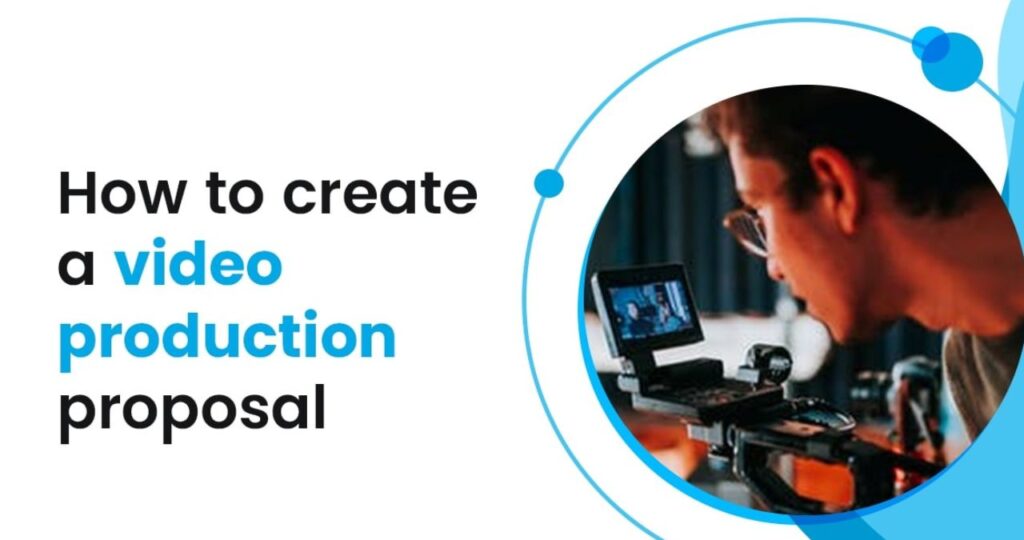How to Write a Winning Rationale for a Project Proposal
SEPT 20, 2024 | LAST UPDATED ON NOV 18, 2024 BY ANGELICA NAIDU

Project Rationale is the only element that stands out when it comes to creating a proposal that is sure to secure funding.
Now, you may be asking yourself, “What is a project rationale?”
Well, a rationale explains why your initiative is important, what problem it’s solving, and why it’s worth the investment. It is more than just an introductory paragraph. It’s quite literally the backbone of your entire proposal. It directly answers the question that every funder asks: “Why should I care about this project?”
Think of your project rationale as an elevator pitch that has to convince the donors, stakeholders, and decision-makers that you are working for a real cause and providing genuine solutions.
A rationale is the only chance for you to present your expertise and help the stakeholders understand your project’s purpose, scope, and expected outcomes, making it easier for them to analyze its worth.
But before we get to the topic at hand, here are a few questions that you must answer if you want to stand out from the crowd.
- What is the cause that your project is addressing?
- Why is it important to address the cause, and what will happen if it isn’t addressed?
- What sets your project apart, and what value does it bring to the table?
- How is your solution making a tangible impact?
When you answer these questions clearly, and it resonates with the decision-makers, it will be much easier for you to get funding and carry forward a successful project.
One key point you have to remember: how well you craft a rationale defines the success of your proposal.
Now that you have a clear understanding of what it entails, let’s break down what makes a great project rationale.
Table of Contents
ToggleUnderstanding the Importance of a Rationale in Project Proposal
A rationale is an important part of any proposal because this is where you get to extensively explain why your project matters and why it deserves funding.
Properly explain how your initiative will solve the problem and bring the readers to the same level of understanding as yours.
For example, as a founder of an environmental NGO, you want to address climate change. As it is a relevant global concern, first educate the donor about how it affects people. Then, mention a viable solution—a plant-based diet that helps stop greenhouse gas emissions. Finally, ask for their help through funding for social media campaigns and physical hoardings to promote this idea.
How to Write the Project Rationale
- Figure Out The Core Problem or Opportunity: Identify the core problem. Then, describe how you will address it with your project. Show that the problem exists and why solving it matters through evidence and data.
- Explain the “Why” Behind the Problem: Talk about how addressing the issue will lead to a lasting impact, plus how it is in sync with the donor’s objectives and values.
- Justify the Project: Prove to the reader that the proposed project is the most practical solution.
- Add Evidence For Support: Use case studies, research, or evidence to support your arguments. Once you represent your rationale’s credibility, show that you truly understand the issue.
- Be Clear and Concise: Use simple words that are to the point and make it easier for the reader to comprehend. Refrain from too much technical language or jargon.
Key Components of an Effective Rationale
By now, we think you’ve understood the importance of a rationale, right? But let’s dive deeper into it to enhance its impact on the stakeholders. Here are a few essential components that MUST be included:
Clearly Stating the Problem or Opportunity
A project rationale is only effective if the problem statement is presented clearly. How else would you provide content and justify your project? Let’s help you understand a bit more about how you can clearly state the problem or opportunity.
- Before you start writing the rationale, understand the donor’s goals and guidelines. What are their priorities? And what kind of projects do they typically fund? Now, with this knowledge, simply align your project with their goals.
- Help them actually picturise the problem by giving them context about the region, community, and resources available. Summarize the background information so that the donors can connect with the cause.
- Now, it’s time to talk about the people or community your project will benefit. This will help your funders understand the human impact of the project.
- To make your case stronger, present them with research data, live examples, past projects, quotes and media articles. This will definitely help you build credibility and create a stronger impact.
Using SWOT analysis to explain the problem
One very useful tool for analyzing the problem is SWOT analysis. Here’s a detailed breakdown:
- Strength: Analyze what could be the positive factors that can help your project succeed.
- Weakness: Figure out the challenges and obstacles that might hinder the project.
- Opportunity: Are there any existing opportunities to address the problem and how are you going to be different and bring in the change?
- Threats: Look for any external factors that might impact the project or the problem you’re trying to address.
Identifying the Target Audience or Stakeholders
An essential part of crafting a project rationale is identifying the stakeholders who are impacted by the problem or opportunity that your project addresses. This can be simply done by understanding the stakeholder’s needs, interests, and concerns. When you’ve understood their pain points, it’s easier to offer a solution that they can directly relate to. It also shows that you’ve invested time in understanding the donor’s perspective and that your project is designed to meet their needs.
Convincing the donor that the problem actually exists!!
Now, here’s when it gets tricky when you have to ensure that the donor believes the problem exists and it requires attention. How can you do that? Here’s how:
- Citing stats or research shows the problem exists
- Sharing stories and testimonials
- Highlighting the news articles
- Providing data on how this problem is impacting the community.
By providing all this, it’ll be easier for both parties to understand things better.
Outlining the Project Objectives and Goals
Goals become easier when they are broken down into bite-sized manageable tasks. This way, you can make the project seem more achievable. Let’s discuss the SMART way to set objectives:
- Specific: Clearly state what you want to achieve with this project.
- Measurable: Quantify your objectives to make them easily trackable.
- Achievable: Set realistic and attainable goals.
- Relevant: align your objective with the problem and donor’s interest.
- Time-bound: Create deadlines to ensure timely completion.
Let’s understand this with an example. Let’s say your project focuses on improving education for underprivileged children. Here’s how you can simplify the objective using SMART:
- Specific: Provide educational resources and support to 500 underprivileged children.
- Measurable: Provide educational resources to 20% more children within 6 months.
- Achievable: Get in touch with local schools to provide more resources and support.
- Relevant: Aligns with the problem of lack of quality education and resources.
- Time-bound: Achieve the goals within the next 1 year.
We hope with this example, you’ll be able to better understand how to implement SMART in your rationale providing a clear roadmap to donors.
Demonstrating the Feasibility of the Project
Demonstrating the feasibility of your project is an important aspect if you want to achieve success. It’s important to conduct studies to assess your project’s viability and potential for success. This will involve analyzing your organizational strength and capacity to address the problem and achieve long-term impact.
We suggest that when assessing feasibility, you conduct a needs assessment to understand the problem and its impact on the community. Another important aspect to evaluate here is whether you have the resources to successfully carry out a project and genuinely make an impact.
Addressing potential challenges and risks
See, by now, we guess it’s clear that the donors want to know that you’ve done your research, analyzed the potential challenges, and have a detailed plan to overcome them. By acknowledging these challenges, you prepare a plan that is fully analyzed.
Let’s understand whether we should focus on addressing potential challenges and risks:
- By showcasing your awareness of the challenges and risks, you can easily demonstrate expertise and enhance credibility.
- When you identify challenges, it reduces the risks of project failure.
- Donors are more likely to invest if you have a full proof plan for overcoming these challenges.
Example of a research rationale for your grant proposal
Let’s take an example of a high child mortality rate in a community, and there’s some NGO that is willing to address this cause. Sadly, an NGO won’t be able to treat child mortality as that’s not the root cause; there are various other problems in that community that are causing child mortality.
Here, let’s assume child mortality has increased due to pneumonia; now, the NGO won’t directly address child mortality and instead come up with a project that will cater to hygiene in and around the area. This way, the NGO might also cater to some other underlying issues that are happening due to unhygienic surroundings.
So rather than focusing on solving the rising child mortality, the NGO focuses on an underlying cause.
Tips for Writing a Persuasive Rationale
You’ve already understood the importance of a project rationale and also why creating an impactful rationale for your project proposal is important, right? So here are a few tips that can help you get better responses:
- Clearly define the problem and its impact on the community. This way, you can make sure the donors understand the genuineness of the case.
- Take time to understand the root cause of the problem and its effect on the stakeholders. This way, you’ll be able to develop a more relevant solution.
- To ensure maximum impact, determine the audience that will benefit from your project and what their pain points are.
- Developing a clear and concise statement that summarizes your goals will help you to communicate your vision to the stakeholders.
Read more: How to write a proposal introduction
FAQs on rationale for your project proposal
What is the difference between project rationale and project justification?
Project rationale and project justification are both components of a project proposal. They both answer the same question of why a project is necessary. However, they have different focuses. Project rationale focuses more on the problem/opportunity and its expected outcome. Whereas a project justification focuses on how to address the problem.
Why is a strong proposal project rationale important?
A strong rationale is a bridge between your crafted solution and the donor’s funding. A rationale can help the donors understand the problem, and it’s impact on the community. If they are able to connect with the story, it enhances their chances of getting funded.
What common mistakes should I avoid when developing a project rationale?
Writing a good rationale can help you get faster funding. But it’s also important to understand what mistakes to avoid while writing a rationale.
- Not aligning your problem with the donor’s perspective.
- Lack of clarity in your rationale. Keep it simple, crisp and concise.
- Having a weak problem statement.
- Not conducting enough research and data.
- Unclear goals and objectives.
How long should my proposal project rationale be?
There are various factors that affect the length.
- What problem are you catering to?
- How much research and data needs to be presented?
- How do you want to present the solution
However, it is suggested that you keep it concise to a single-page document, as it becomes easier for the donors to read and understand.
In which types of proposal templates is the project rationale section used?
The project rationale section is used for grant proposal templates as it gives a detailed overview of the problem statement and the solutions. A rationale is all about addressing the problem and presenting a solution; hence, the perfect place for it is a grant proposal template.
Can I use the same project rationale for multiple proposals?
Yes, you can use the same project rationale for multiple funders. However, you will need to ensure a few things:
- Make sure you’re referring to the correct organisation
- Ensure that your rationale is relevant to their visions.
- Review the guidelines of the organisations.
- Keep yourself aware of the ethical implications.
Finally, it’s ok to use the same project rationale, but it’s suggested you draft a unique one for each funder so it’s more personalized leading to better responses.
Read more: How to write a proposal title
Read more: How to write a technical proposal
Increase your close rates today!
Secure every pitch that you make with Super Proposal. Craft winning proposals, share and track them on a single, comprehensive platform.
✓ 15-Day Trial. No Credit Card Required.

Recent Post



